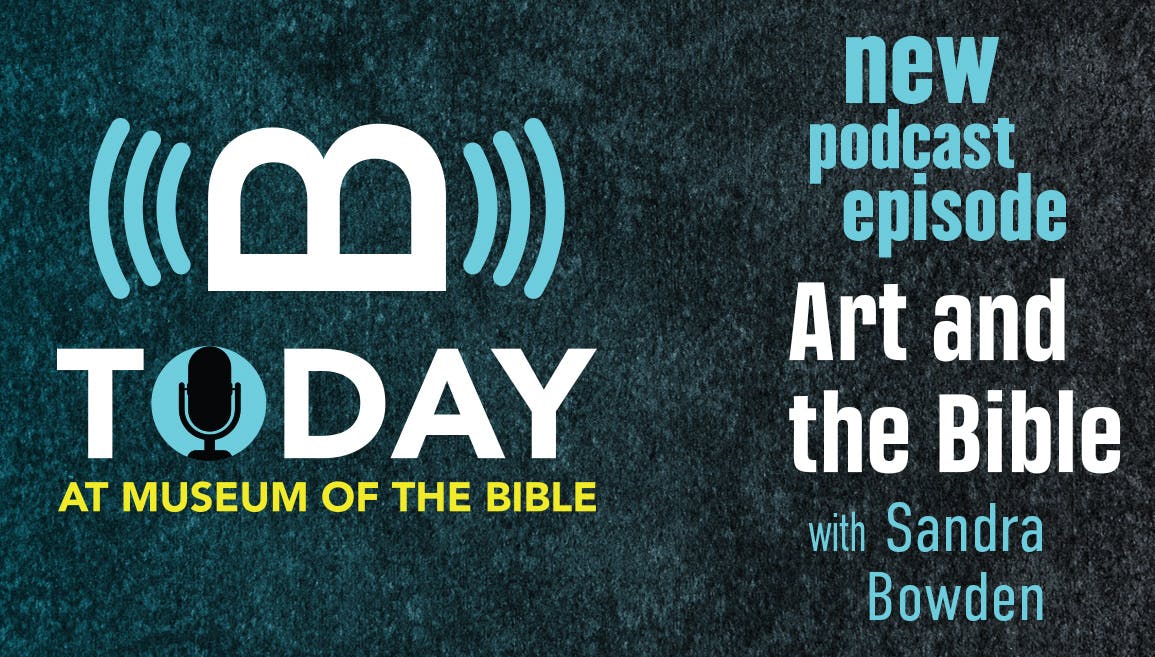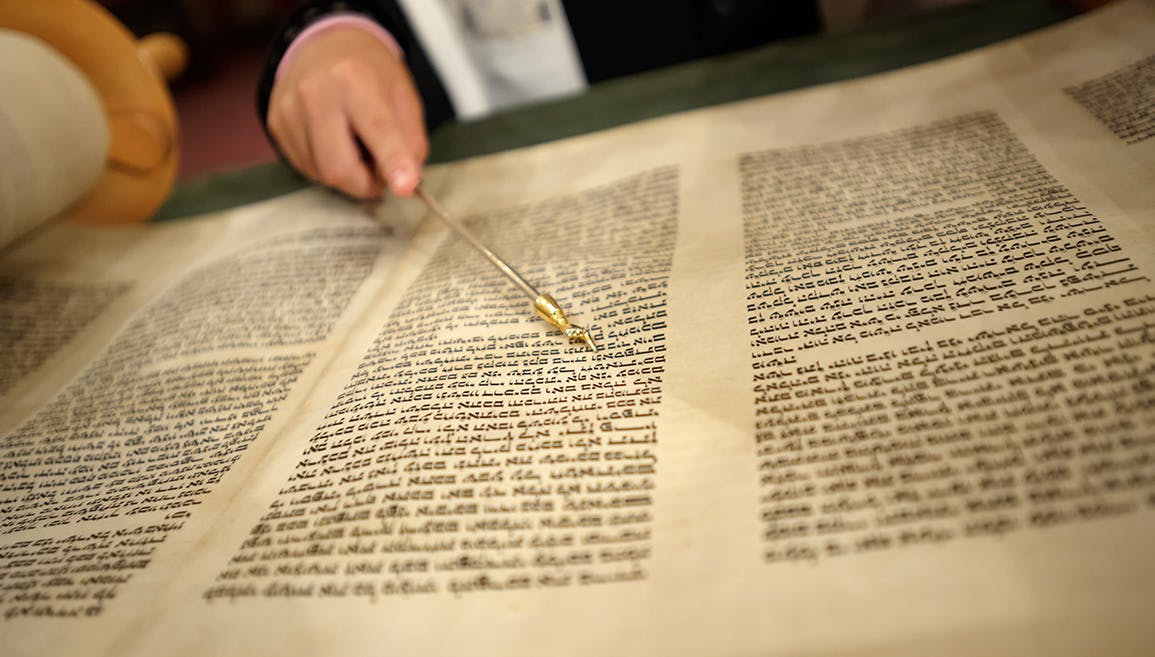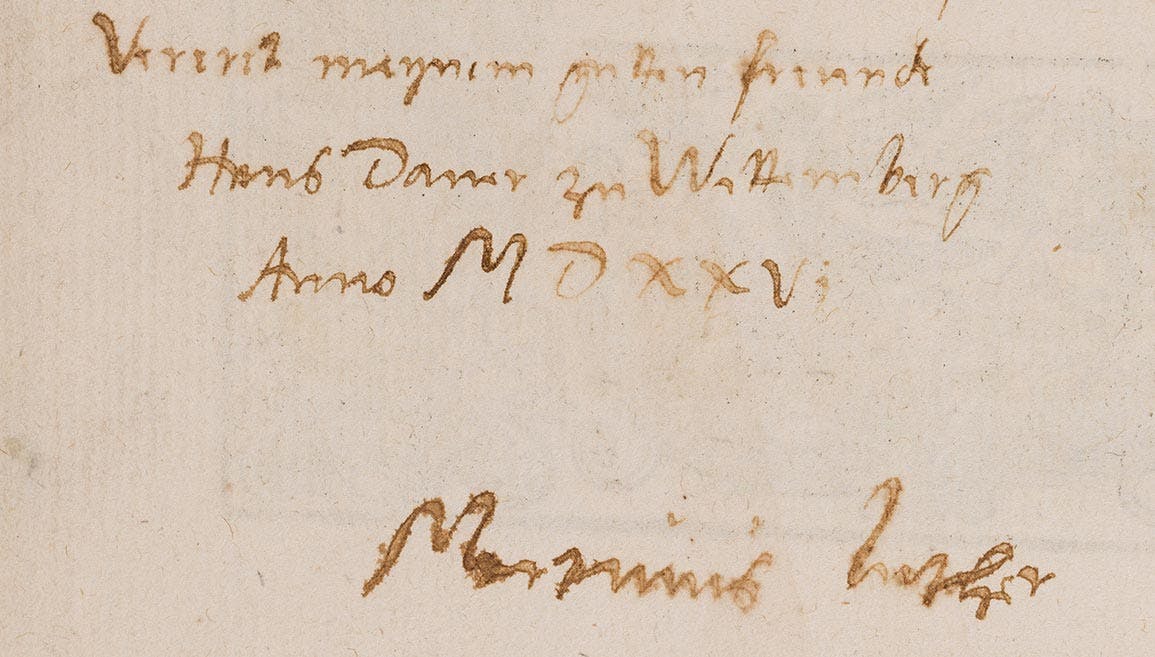From the Podcast: Art and the Bible with Sandra Bowden

On our podcast, Charlotte Clay, director of marketing and communications, and Dr. Jeff Kloha, chief curatorial officer, interviewed artist and collector Sandra Bowden. Museum of the Bible’s exhibit Ecce Homo: Behold the Man features artwork on loan from the Bowden Collections, privately owned by Sandra Bowden.
The following interview has been edited for clarity and space. To get the full interview, listen using the video player above or listen to the episode on our podcast, Today at Museum of the Bible, or on our YouTube channel.
Jeff Kloha: Well, Sandra, today we opened the Ecce Homo exhibit, [translated to] “Behold the man,” from John 19:5. What's the exhibit about and what are some of your favorite pieces that are on display?
Sandra: Pilate was in a bind. He just said, “He's all yours. You guys decide.” And it's the artwork that has flowed from that event in the Bible, and how the church picked up on it, particularly in the Middle Ages, and how it took different forms.
I have identified about four ways that it's been depicted. One is the scene of the event taking place. There's a piece by Netherlandish artist Cort and Jesus is dressed with his purple robe thrown over, Pilate is there, and the crowd is below the stage where he is positioned and they're there ready to go. They even have a cross. So that's one venue, the Otto Dix piece has that, but it's German expressionist and you can see the rage on these people's faces. Ready to go. Give him to us.
And then there's another group beginning in about the 1400s, 1500s, where we began to see just the face of Christ. It's his agony, it's his suffering that's pictured in his face. So, it became unimportant to have the scene.
There became another period when [Guido] Reni came along and a few others where Christ is looking upward. There are tears, there's blood, there's a crown of thorns—where did that come from? Where did this looking upward come from? And it's thought historically that it was the story in the garden of Gethsemane conflated with where it says he looked up and said this is my time.
The fourth one is the “Man of Sorrows,” and there's a whole huge volume of art built around the Man of Sorrows. Christ is usually naked from the waist up, the sores in his hand and in his feet are very visible. There might be lacerations on his body. And the instruments of the passion are usually present. In this show, there's a little diptych with that on half and the Mater Dolorosa on the other half, where it's the sorrow of Mary when, as Simeon had predicted, her heart would be pierced.
So that's there. And then there is one other piece in the show, that is, the crowning, where the crown of thorns is placed on his head. You don't typically see that, but Bruce Herman titled that O Sacred Head. And over time, everything from the crowning, the beating, the presentation, has been absorbed into this concept of “Ecce Homo.”
This excerpt is from an episode of Today at Museum of the Bible. Listen to the whole interview on Spotify, Google Podcasts, Apple Podcasts, iHeart Radio, YouTube, or wherever you get your podcasts.
See the artworks mentioned in this interview on display in Ecce Homo: Behold the Man until May 15, 2024, at Museum of the Bible. Learn more here.


